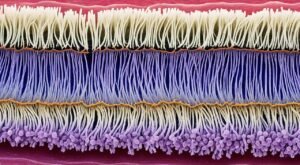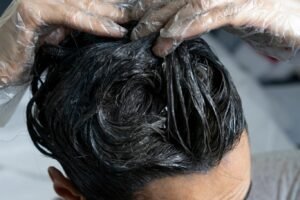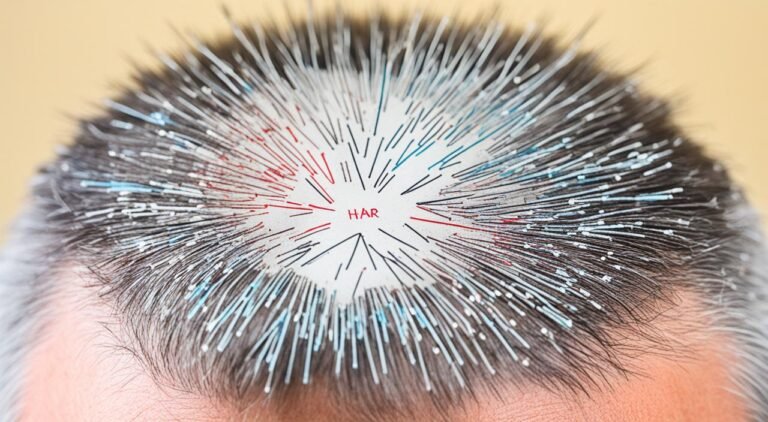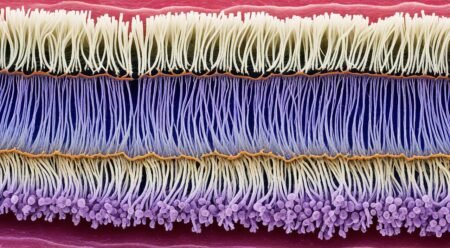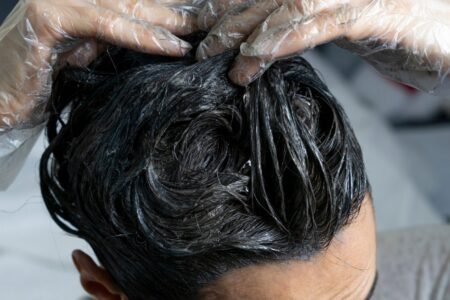Imagine witnessing the intricate dance of life with clarity only to have it fade gradually into a haze. This quote resonates deeply when you confront the mirror and the visible traces of your once lush mane have begun to retreat. Hair loss can erode not just your once vibrant look, but your vision of yourself. But does the solution lie within the promise of hair restoration? You’ve likely seen the adverts, read the testimonials, or even heard anecdotes of success, yet the persistent question remains: Does hair transplant work?
In this in-depth exploration, we tackle this very question, offering you a glimpse of what modern hair loss treatment entails and the realistic outcomes you can expect. Shedding light on the facts will empower you with the insight necessary to make a decision that aligns your vision for the future with the possibilities of today’s medical advances.
Understanding Hair Transplantation
If you’re looking to combat hair loss, the concept of a hair transplant may have sparked your interest. This innovative medical procedure has evolved significantly, offering hope and restored confidence to many. Let’s delve into what a hair transplant entails, understand how the techniques have advanced over time, and debunk some common myths surrounding this hair restoration solution.
What is a Hair Transplant?
A hair transplant is a surgical procedure that involves transferring hair follicles from donor areas, typically the back and sides of your scalp, to the areas where hair is thinning or absent. The primary goal of this hair transplant surgery is to achieve a more natural-looking hairline and to increase the density of hair in balding spots, effectively reversing the visual impact of hair loss.
The Evolution of Hair Transplant Techniques
Over the years, hair transplant techniques have undergone tremendous improvements, evolving from the rudimentary plug method to sophisticated follicular unit transplantations. The journey from those older methods to state-of-the-art techniques can be fascinating enough to warrant a closer look:
- Follicular Unit Transplantation (FUT): This technique involves removing a strip of skin with hair follicles from the donor area, which is then divided into individual grafts for transplantation.
- Follicular Unit Extraction (FUE): An advancement in hair transplant procedure, FUE requires the extraction of individual hair follicles from the donor area using a small punch tool, making it a less invasive option with minimal scarring.
These developments have not only improved patient comfort but also the aesthetic outcomes of hair restoration, making the procedure highly desired among those suffering from hair loss.
Common Misconceptions about Hair Transplant Surgery
Despite the popularity of hair transplants, misconceptions abound. Some believe that hair transplant surgery guarantees immediate results, but the reality is that full hair growth can take several months. Moreover, potential patients often hear that results are not long-lasting, whereas, with proper care, transplanted hair can continue to grow indistinguishably from natural hair indefinitely.
| Myth | Reality |
|---|---|
| Hair transplants look artificial | Modern techniques create a natural, undetectable hairline |
| Transplanted hair doesn’t last long | With proper care, the results can be permanent |
| The procedure is extremely painful | Advancements have led to minimal discomfort during and after the surgery |
Your quest for a fuller head of hair could very well be at an end with an effective hair transplant procedure. By addressing these myths, we hope you’re now poised to approach the prospect of hair transplant surgery with a clearer perspective. Remember, the key to successful hair restoration lies in choosing the right technique and managing expectations with a board-certified surgeon.
What to Expect During a Hair Transplant Procedure
Embarking on the journey towards hair restoration can be both exciting and nerve-wracking. To alleviate any anxieties and ensure you’re fully prepared, it’s essential to understand the hair transplant process from the initial steps of hair transplant planning to the completion of the procedure itself.
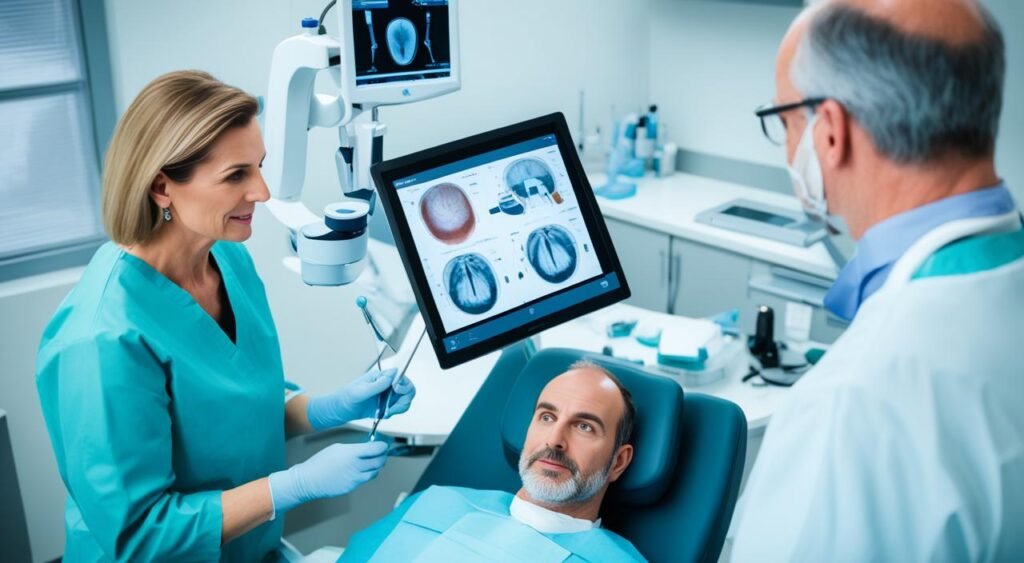
Initial Consultation and Planning
Your path to hair restoration begins with a comprehensive consultation. A qualified hair restoration specialist will methodically evaluate your hair loss, considering factors such as the pattern of hair loss, your health history, and potential for future hair loss. Together, you will discuss your expectations, and the specialist will craft a personalized treatment plan. This first step is vital in ensuring that your procedure is tailored to your unique situation, optimizing the potential for successful outcomes.
Steps of the Hair Transplant Process
Grasping the sequence of events in a hair transplant can provide reassurance and clarity. Here’s what you’ll generally experience:
- Preparation and Anesthesia: Your scalp will be prepared and local anesthesia applied to ensure comfort during the procedure.
- Extraction of Follicles: Depending on the chosen method, such as FUT or FUE, hair follicles will be meticulously removed from the donor area.
- Recipient Site Creation: Tiny incisions are made in the recipient area, where hair loss has occurred, to accommodate the new follicles.
- Implantation: The extracted follicles are carefully placed into the incisions in the recipient area, angled precisely to mimic natural hair growth.
Throughout the procedure, your wellbeing is of utmost importance, with the team monitoring you closely to ensure each phase of the hair transplant process proceeds smoothly. Armed with this knowledge, you can embark on your hair restoration journey with confidence.
Does hair transplant work: Analyzing the Success Rates
When it comes to hair restoration, one of the most frequently asked questions is undoubtedly “Does hair transplant work?” The answer, supported by a multitude of clinical studies, lies within the hair transplant success rate. This rate not only sheds light on the efficacy of hair transplant surgery but also helps set expectations for those considering this solution for hair loss. Here, we delve into the figures that define the benchmarks for successful hair restoration and highlight factors that can influence these outcomes.
Success rates can vary depending on several factors, including the technique used, the experience of the surgeon, and the individual patient’s condition. To give you a clearer understanding, let’s examine a straightforward table representing typical success rates associated with various hair transplant techniques:
| Technique | Success Rate | Notable Factors |
|---|---|---|
| Follicular Unit Extraction (FUE) | 90-95% | Minimally invasive, less scarring |
| Follicular Unit Transplantation (FUT) | 85-90% | Higher follicle yield, possible linear scar |
| Direct Hair Implant (DHI) | 90-95% | Precision in follicle placement, no scalpel incisions |
| Robotic Hair Transplantation | 90-95% | Advanced accuracy, reduced human error |
While these figures are promising, it’s essential to note that individual experiences may vary, and a high success rate doesn’t guarantee that complications will not arise or that every patient will be satisfied with their results. It’s critical to consult with a reputable hair transplant specialist who can provide a personalized prognosis based on your unique circumstances.
Remember, the effectiveness of a hair transplant is not only about the regrowth of hair but also about the natural appearance and how well it meets your expectations. By carefully considering your options and the capabilities of hair transplant surgery, you can make a well-informed decision about your path to hair restoration.
Factors Influencing Hair Transplant Success
Embarking on a hair transplant can be a journey towards restoring not just your hair, but also self-confidence. The route to achieving the lush hair growth you envision is shaped by multiple factors. Recognizing these can contribute significantly to the hair transplant success rate and support the effectiveness of your hair loss treatment.
It begins with the expertise behind the procedure. A skilled surgeon specializes in hair restoration, employing precision and artistry to deliver natural-looking results. Additionally, the health and characteristics of the donor area are vital. Donor hair quality should be robust and plentiful to serve as capable replacements to areas affected by thinning or balding.
Aspects of your own health and lifestyle also have a direct impact on post-operative results. From nutritional habits to smoking or stress management, these lifestyle choices can either impede or promote healthy hair growth post-transplant. Finally, following post-operative care instructions diligently ensures the transplanted hair follicles adapt well to their new location, encouraging successful integration and growth.

To better visualize the relationship between these factors and the potential success of a hair transplant, consider the table below outlining various elements and how they come into play:
| Factor | Importance | Optimization Tips |
|---|---|---|
| Surgeon’s Skill | Crucial for procedural accuracy and aesthetics | Research surgeons with a track record of successful transplants |
| Donor Hair Quality | Essential for the longevity and appearance of the transplant | Maintain a healthy scalp and hair regimen |
| Personal Health | Affects hair growth and healing post-op | Adopt a balanced diet, avoid smoking, and manage stress |
| Post-Op Care Adherence | Directly influences graft survival | Follow your surgeon’s aftercare instructions meticulously |
Considering these factors seriously and proactively managing them can help pave the way to a successful hair loss treatment journey. Remember that diligence in research, choices in lifestyle, and commitment to aftercare can significantly elevate your hair transplant success rate.
Real Stories: Before and After Hair Transplant
Witnessing the transformation of individuals who have experienced a hair transplant procedure can be truly compelling. You’re not just looking at clinical before and after pictures; you’re looking into the lives of people who made the decision to seek hair restoration. Their journeys, from initial hair loss to the joy of hair transplant recovery, reveal the profound impact that these procedures have had on their self-confidence and satisfaction.
-
“After years of feeling self-conscious about my thinning hair, I finally decided to go for a hair transplant. The process was simpler than I expected, and recovery was a breeze with the guidance of my surgeon. Now, I look in the mirror and see a younger, more vibrant version of myself. It’s been life-changing.” – Eric S.
-
“The decision to get a hair transplant was driven by a deep desire to look the way I felt inside – energetic and youthful. The procedure itself was a one-day event but the results have lasted much longer. I feel revitalized when I see the new hair growth where there once was none.” – Lisa G.
-
“I was skeptical at first, but seeing actual hair restoration results from friends who underwent the procedure gave me hope. I am so grateful I took that step; the difference is night and day. My recovery was smooth and the new hair has blended seamlessly with my existing hair.” – Devin R.
A hair transplant is not just about gaining back lost hair; it’s about reclaiming your identity and the way you present yourself to the world. It’s about the smiles when you catch a glimpse of your reflection, the confidence when you step out the door, and the absence of hats or cover-ups that you used to hide behind.
Remember, success stories come from careful planning, selecting experienced surgeons, and following through with the aftercare instructions. Your journey to a fuller head of hair is unique, and with the right approach, you too can celebrate a successful hair transplant recovery and enjoy the lasting benefits of hair restoration.
Hair Transplant Recovery and Aftercare
Embarking on the journey of a hair transplant brings with it the promise of restored hair growth, but it’s the aftercare and recovery process that truly lays the foundation for your future head of hair. The steps you take after your procedure are as critical as the surgery itself to ensure the best possible results. Let’s discuss the immediate and long-term care strategies that are crucial for your hair transplant success.
Immediate Post-Op Care
Following your hair transplant surgery, your scalp may be tender, and you’ll likely need to take medications such as pain relievers and anti-inflammatories or antibiotics to prevent infection. Your surgeon will also provide you with a detailed hair transplant aftercare regimen. Here are some key points you’ll need to remember:
- Sleep with your head elevated to minimize swelling.
- Avoid any strenuous activities that could increase blood flow to your scalp and cause bleeding.
- Refrain from washing your hair until instructed by your surgeon, usually a few days post-surgery.
Adhering to these directives not only promotes hair transplant recovery but also safeguards the results of the procedure.
Long-term Hair Care After a Transplant
Once the initial phase of hair transplant recovery has passed, you’ll enter the long-term maintenance phase. It’s essential to protect your new follicles to encourage hair growth. Consider the following tips for ongoing care:
- Use gentle, non-abrasive shampoos to avoid irritating your scalp.
- Avoid direct sunlight or harsh environmental conditions to protect the new grafts.
- Maintain a nutritious diet rich in vitamins and minerals that support hair growth.
Now, let’s compare the types of products that are beneficial for hair transplant aftercare:
| Product Type | Function | Application |
|---|---|---|
| Gentle Shampoo | Cleanses without causing irritation | Starting a few days post-op as instructed |
| Moisturizing Conditioner | Hydrates and nourishes the scalp and hair | After shampoo, once fully healed |
| SPF Scalp Protector | Prevents UV damage to sensitive scalp areas | Daily, when exposed to sunlight |
Remember, patience is key to seeing the full benefits of your hair transplant. It can take several months for hair to begin growing in the transplanted areas, and a year or more to see the final outcome. But with diligent hair transplant aftercare during recovery, you can look forward to lasting hair growth and the restoration of your confidence.
The Cost of Hair Transplant Surgery
When considering hair transplant surgery as a hair loss treatment, it’s crucial to understand not just the medical implications, but also the financial investment involved. Hair transplant cost can vary significantly across different locales and clinics, and as with any surgical procedure, it’s often about finding the right balance between quality of service and affordability.
Understanding the Financial Investment
The cost of hair transplant surgery can range widely, influenced by factors like the technique used, the extent of the treatment needed, the surgeon’s experience, and the clinic’s location. Procedures such as FUT (Follicular Unit Transplantation) might be more affordable than FUE (Follicular Unit Extraction), but each comes with its specific benefits that should be considered. Clinics may offer a rough estimate, but a personalized consultation is key to understanding the complete cost.
Cost vs. Longevity of Results
An essential factor to take into account is the cost-effectiveness of a hair transplant. While the initial expense might seem high, it’s important to evaluate the long-term benefits it could bring. Quality hair transplant surgery can provide enduring results, potentially negating the need for repeated treatments in the future. Comparing the potential longevity of results against the initial outlay is a crucial step in determining the value of this investment in your hair loss treatment plan. Will the results meet your expectations and justify the cost? That’s a question to ponder deeply before committing to surgery.
If you’re considering a hair transplant, reflect not only on the impact it will have on your appearance and confidence but also on your financial state. Weighing the initial hair transplant cost against the potential for long-term satisfaction is an exercise in measuring value beyond the price tag. It’s an investment in yourself, and like all investments, it demands careful consideration and planning.
Choosing the Right Hair Transplant Clinic
As you navigate the world of hair restoration, the decision of where to have your procedure is as crucial as the decision to have the procedure itself. A hair transplant clinic’s reputation, historical performance, and the proficiency of a hair transplant surgeon play pivotal roles in the success of your treatment. It’s essential to do thorough research and choose a clinic that not only aligns with your needs but also exudes excellence and expertise in the field of hair restoration.
Criteria for Selecting the Best Clinic
It can be overwhelming to evaluate the myriad of clinics available. Focus on key factors such as the credentials and experience of the medical team, the technology they employ, and honest patient testimonials. A clinic that invests in the latest advancements is likely committed to providing superior results. Also, prioritize those with a transparent track record—after all, your safety and satisfaction hinge on their capability and consistency in delivering quality hair transplants.
Questions to Ask Your Hair Transplant Surgeon
During your consultation, engage with potential surgeons by asking pointed questions. Inquire about their experience, the types of procedures they specialize in, and their approach to hair restoration. You could also request to view before and after photos of previous patients. By having this dialogue, you’ll gauge the surgeon’s expertise and ensure you’re well-informed before you embark on your hair restoration journey.
